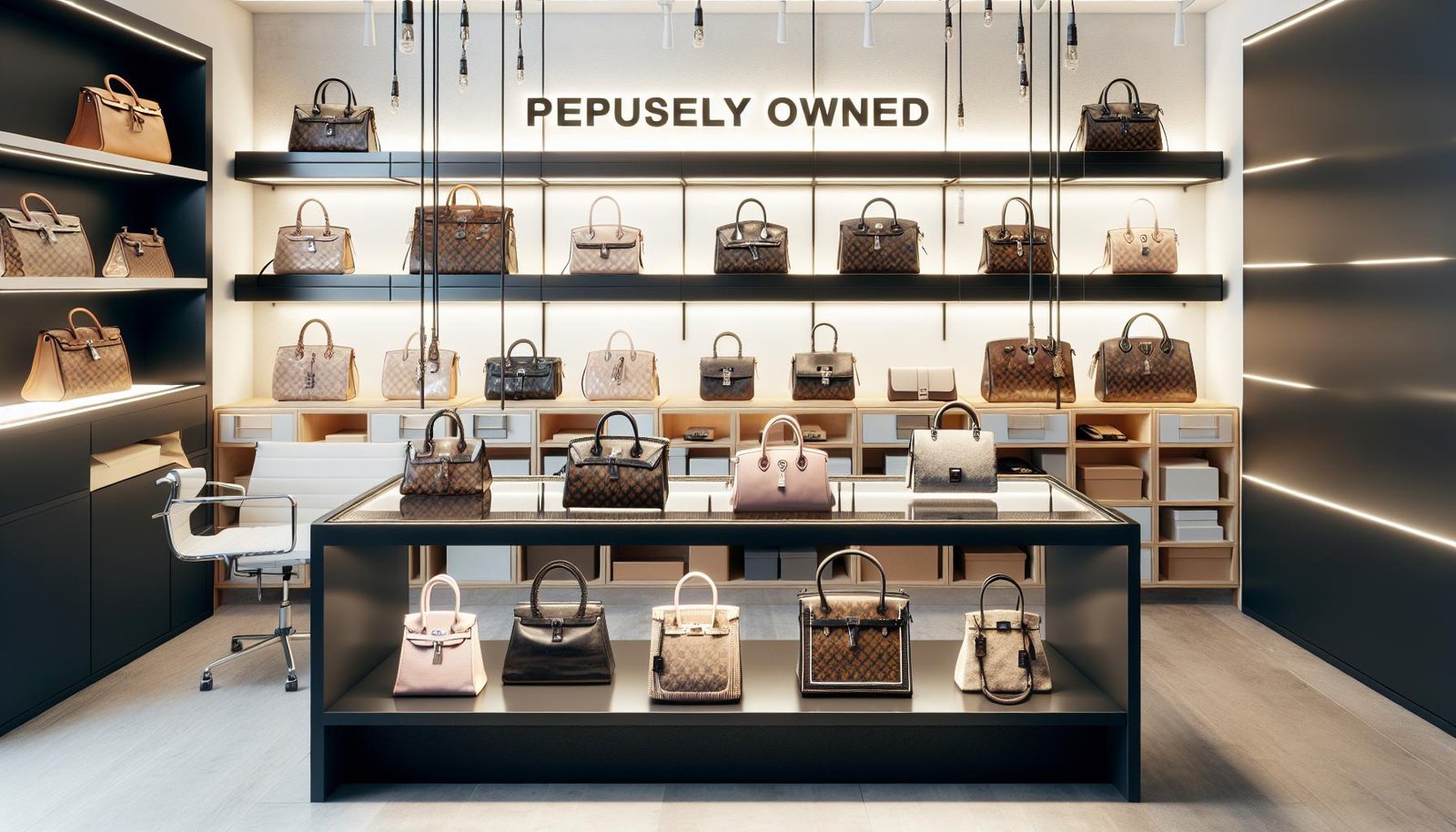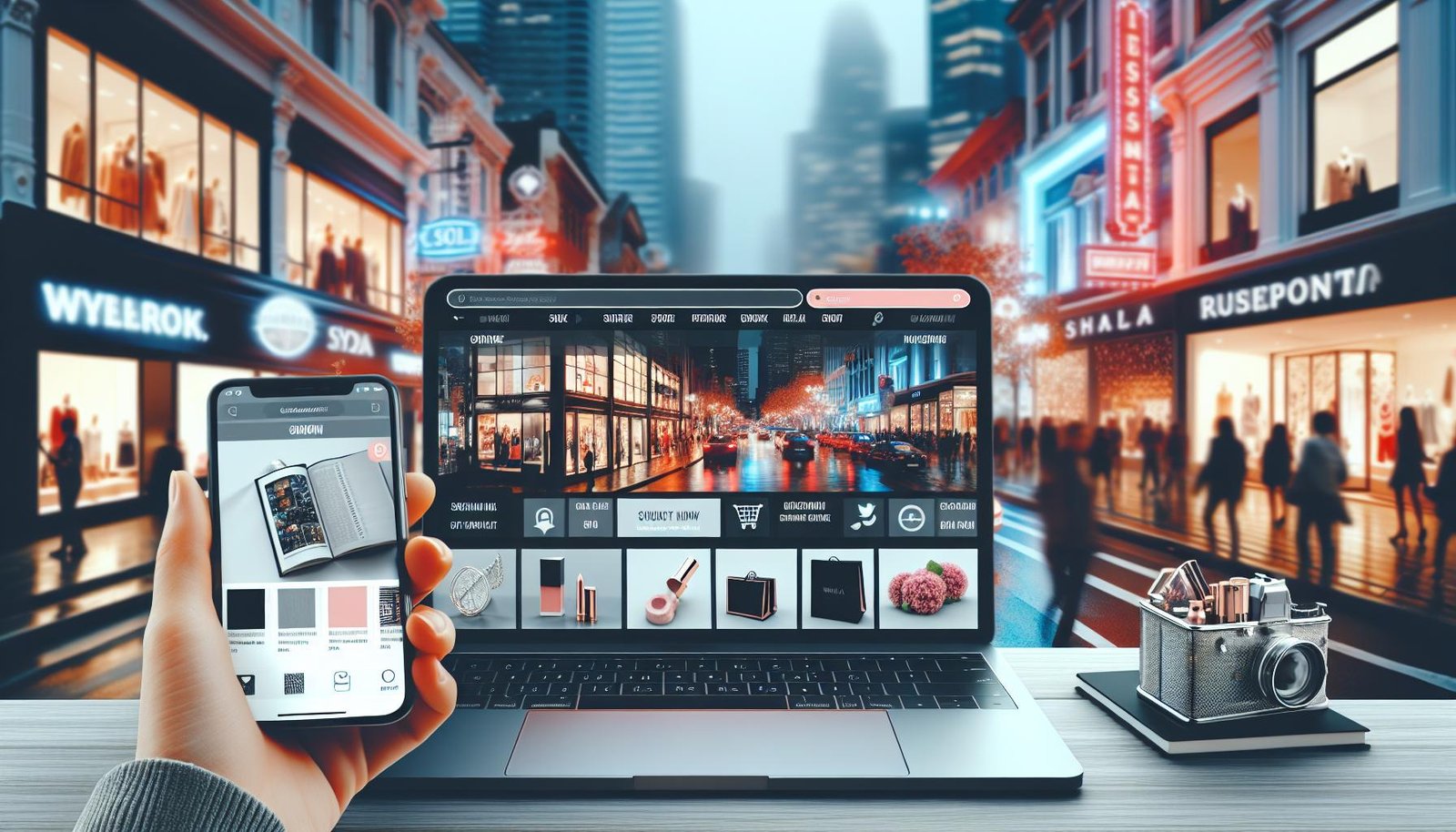I’ve always had a soft spot for designer handbags. Their craftsmanship, the luxury feel, and the way they complete any outfit is just unparalleled. But let’s be real, our tastes and needs evolve over time, and so does our handbag collection. That’s where the adventure of selling pre-owned designer handbags comes in. It’s not just about decluttering; it’s about giving these beautiful pieces a new life while making some extra cash.
Navigating the resale market can seem daunting at first. Where do you start? How do you ensure you’re getting a fair price? And how do you find trustworthy buyers? I’ve been through this process more times than I can count, and I’m here to share my insights. Whether you’re looking to sell your first designer handbag or you’re a seasoned seller, I’ve got some tips that’ll help make the process smoother and more rewarding.
Understanding the Pre-Owned Handbag Market
Navigating the resale market for pre-owned designer handbags requires a bit of knowledge and strategy. From my experience, understanding the dynamics of this market can significantly impact how successfully you sell your items. Let’s dive into some of the key aspects that you need to be aware of.
Firstly, demand and desirability play crucial roles. Certain brands and models, like Chanel’s Classic Flap or Hermes’ Birkin, consistently fetch high resale values due to their iconic status and high demand. It’s important to research which designs are currently in vogue, as trends can fluctuate, affecting your bag’s market price.
Secondly, the condition of the handbag is paramount. Buyers in the pre-owned market are looking for items that are gently used and well cared for. Handbags with minimal wear and tear, in good condition, are more likely to sell quickly and for a better price. Documenting any imperfections and being transparent about the bag’s condition is essential.
Authenticity is another critical factor. The market for luxury goods is saturated with counterfeits, making buyers wary. Ensuring your handbag is authentic, and providing any documentation to prove it, will increase buyer confidence and help you secure a sale. Many platforms offer authentication services, which can be a valuable asset.
Knowing where to sell is also fundamental. Various online platforms and consignment stores specialize in pre-owned luxury goods. Each has its advantages, from wider audiences to higher-end clienteles. Researching and choosing the right platform can have a significant impact on how quickly you sell your handbag and how much profit you make.
Finally, timing can influence your sale. Selling a designer handbag at the right time, maybe when a particular brand is gaining popularity or during certain seasons, can help you achieve a better price. Keeping an eye on the fashion industry’s trends could inform the best times to list your pre-owned designer handbag.
Entering the pre-owned handbag market with a strategy and good understanding of these dynamics gives you a solid foundation to make informed decisions, helping turn your pre-loved items into a rewarding venture. Remember, each handbag you sell not only offers you a chance to earn but also brings joy to someone looking to add to their collection without the retail price tag.
Preparing Your Handbag for Sale

After diving into the resale market’s essentials, it’s time to focus on getting your designer handbag ready for its next owner. Preparing your handbag for sale is a crucial step, influencing not only the speed at which it’ll sell but also the price it will fetch. Here’s how I go about it:
Cleaning and Repairing
Firstly, I give the handbag a thorough cleaning, both inside and out. Using appropriate cleaners for the material, be it leather, suede, or fabric, ensures no accidental damage. For leather bags, I use a soft cloth and a gentle leather cleaner, wiping in circular motions. I tackle any stains on fabric bags with a mild fabric cleaner, and for suede, a soft suede brush does the trick.
If the bag has any minor damages, such as loose threads or hardware in need of polishing, I address these issues next. Sometimes, a professional repair service is necessary for more significant fixes, like torn lining or broken zippers. Remember, a well-maintained handbag commands a higher price.
Authenticity Verification
Ensuring the handbag’s authenticity and communicating this to potential buyers is paramount. I always keep the original receipt, dust bag, and box if available, as these items add value and reassure buyers of the bag’s authenticity. For bags where these are not available, obtaining a certificate of authenticity from a reputable verifier can make a big difference. This step not only builds trust with buyers but also helps justify your asking price.
Taking High-Quality Photos
Good photos sell products, and this is especially true for high-value items like designer handbags. I take clear, high-resolution photos from multiple angles, capturing the bag’s overall condition, any brand markings or serial numbers, and highlighting both its features and any flaws honestly. Natural lighting works best to show the true colors and textures of the handbag.
Writing an Honest Description
When listing the handbag, I ensure my description is detailed and honest. I include information on the bag’s condition, brand, model, size, and any included accessories, such as the original dust bag or box. Disclosing any wear and tear, no matter how minor, prevents future disputes and builds positive buyer-seller relationships.
Choosing the Right Platform

After detailing the steps to prepare a designer handbag for sale, picking the suitable platform becomes critical in reaching potential buyers and closing a sale successfully. I’ve found that different platforms cater to varied audiences, fees, and ease of use, significantly impacting the overall selling experience and success rate.
Dedicated Luxury Resale Websites
First on my list are platforms that specialize in luxury goods, such as The RealReal, Vestiaire Collective, and Fashionphile. These websites attract a dedicated audience looking specifically for high-end items, offering an advantage in terms of targeted buyers. However, they often take a commission, which varies from site to site, so I always ensure to factor this into my pricing strategy.
E-commerce Giants
Next, there’s the broader avenue of e-commerce behemoths like eBay and Amazon. These platforms boast vast user bases, which increases the chances of your handbag being seen. Yet, the wide range also means more competition, and it’s paramount to create standout listings with clear, sharp photos and detailed descriptions to catch a buyer’s eye. It’s also beneficial to stay informed about the fees they charge, as they can nibble away at profits.
Social Media Marketplaces
Social media platforms such as Instagram, Facebook Marketplace, and even newer players like Depop, have become increasingly popular for selling pre-owned luxury items. I appreciate their low (or no) fees and direct line to interested buyers. However, the need for a keen eye for scams is greater here. I always take extra steps to vet potential buyers and ensure secure payment methods.
Local Consignment Stores and Online Directories
For those preferring a more traditional route, local consignment stores can be a fantastic option. They allow personal interaction and the ability to negotiate prices directly. Additionally, I leverage online directories like Craigslist for local sales, eliminating shipping hassles and fees. Still, safety during transactions is paramount, so I meet buyers in public places and opt for cash payments or secure digital transactions when possible.
Pricing Strategy

After selecting the right platform to sell my pre-owned designer handbags, I turn my attention to devising an effective pricing strategy. This step is crucial for attracting potential buyers while ensuring I make a decent profit from the sale.
First, I conduct thorough research on the current market value of the handbag I plan to sell. This involves checking various online marketplaces, luxury resale sites, and even recent auction prices for similar bags. By gathering this information, I gain insights into how much buyers are willing to pay for a handbag of its brand, model, and condition.
Next, I consider the rarity and demand for the model. Handbags that are limited editions or from sought-after collections can command higher prices. If my bag falls into one of these categories, I adjust the price accordingly, ensuring it reflects its unique value in the market.
Condition plays a vital role in pricing. A handbag in pristine condition without signs of wear can be priced closer to its original retail value, whereas one with evident wear and tear must be priced lower. I make honest assessments of my bag’s condition, accounting for any flaws that could affect its value.
I also factor in my personal selling goals. If I’m looking to sell quickly, I might price the bag slightly lower to make it more appealing to buyers. Conversely, if I can afford to wait for the right buyer, I might set a higher price, anticipating negotiations.
To set a competitive price that feels right for both me and potential buyers, I weigh all these factors together. The final pricing incorporates the bag’s market value, rarity, condition, and my selling objectives. This comprehensive approach ensures the price is fair, competitive, and likely to attract attention in the bustling pre-owned luxury market.
Lastly, I prepare myself for negotiation. Buyers often seek the best deal possible, and being open to reasonable offers can increase the chances of a successful sale. I decide on the lowest price I’m willing to accept before listing the bag, ensuring I’m ready for potential haggling while protecting my profit margins.
By meticulously crafting a pricing strategy based on comprehensive market research, condition assessment, and personal selling goals, I position my pre-owned designer handbags attractively in the resale market. This methodical approach aids in setting a price that resonates with buyers, facilitating a quicker, more profitable sale.
Creating an Effective Listing
Having discussed the importance of a thoughtful pricing strategy, it’s crucial to put equal emphasis on creating an effective listing to sell my pre-owned designer handbag. A compelling listing not only attracts potential buyers but also provides them with essential information to make an informed purchase decision. Here, I’ll share key insights on crafting a listing that stands out.
Capturing Attention with a Stellar Main Image
The main image of my handbag will be the first thing potential buyers see. I ensure it’s high-quality and showcases the bag in its best light. I usually choose a well-lit, clear image that highlights the bag’s condition and unique features.
Writing a Clear and Detailed Description
In the description, I’m precise about the handbag’s condition, brand, model, dimensions, and color. I make it a point to mention any signs of wear or unique details. Being honest about the item’s condition helps build trust with potential buyers.
Highlighting Authenticity
Since authenticity matters immensely in the pre-owned designer handbag market, I include information on how the bag’s authenticity can be verified. This might be through serial numbers, purchase receipts, or authenticity cards that I have available.
Setting Competitive yet Realistic Pricing
Referencing my earlier pricing strategy, I set a price that’s competitive yet realistic. I explain my reasoning for the price in the listing, especially if it’s rare or in high demand, making sure buyers understand the value they’re getting.
Encouraging Potential Buyers to Act
To encourage potential buyers to act, I make sure to include a call-to-action in my listing. This could be inviting them to make an offer, asking questions, or simply suggesting they view more photos of the bag. Making myself available for inquiries or additional information can make a significant difference.
Utilizing Keywords for Better Visibility
I strategically use keywords related to the designer brand, model, and unique attributes of my handbag. This ensures my listing appears in relevant searches, whether on a dedicated resale platform or a broader online marketplace.
By meticulously following these steps, I aim to create an effective listing that not only showcases my pre-owned designer handbag in the best possible way but also reaches interested buyers, encouraging quick and satisfactory sales.
Closing the Sale
After investing time to showcase my pre-owned designer handbag effectively, closing the sale becomes the final, crucial step. I’ve learned that engaging with potential buyers, negotiation tactics, managing payment and shipping, and after-sale service are key to complete this process smoothly and ensure both the buyer and I are satisfied with the transaction.
Engaging with Potential Buyers
I always make it a point to respond promptly and politely to any inquiries from potential buyers. This shows I’m serious and responsive, increasing their confidence in me and the product. I provide additional information or photos if requested, as this helps in building trust and a positive rapport with the buyer.
Negotiating the Price
Negotiation is common when selling pre-owned items, including designer handbags. I stay open to reasonable offers but protect my bottom line by knowing the least amount I’m willing to accept. Providing justification for my price, such as the bag’s condition, rarity, or included accessories, often helps in reaching an agreement satisfying both parties.
Managing Payment and Shipping
Once the price is agreed upon, I ensure secure payment methods are used. Platforms like PayPal, which offer protection for both buyers and sellers, are my preference. For shipping, I choose reliable services and provide the buyer with tracking information. I also take care to pack the handbag securely, minimizing the risk of damage during transit.
After-Sale Service
The sale doesn’t end with shipping the handbag. I follow up with the buyer to confirm they’ve received the handbag and are happy with it. This step is important for building a good seller reputation. If the buyer has any concerns upon receiving the item, I address them promptly and efficiently to resolve any issues.
By focusing on these aspects, I aim to ensure a smooth and positive closing phase for the sale of my pre-owned designer handbags. This approach not only leads to successful transactions but also helps in building my reputation as a trusted seller in the competitive pre-owned market.
After the Sale
Navigating through the intricate process of selling pre-owned designer handbags, I’ve realized the importance of what comes after the sale. Post-sale activities are crucial for maintaining a good reputation as a seller and potentially securing repeat business. Here’s my guide to handling the period after a sale successfully.
Request Feedback
Feedback plays a critical role in online selling platforms. I always reach out to buyers, kindly asking for their feedback on the transaction. Positive feedback not only boosts my profile but also gives prospective buyers confidence in making a purchase from me. I make it a point to send a personalized thank you message, which sets a friendly tone for requesting a review.
Offer After-Sale Support
Sometimes, issues may arise after the sale. Maybe the buyer has questions about the handbag’s care or notices something they missed before purchasing. I ensure to make myself available for any post-sale inquiries or concerns. Offering after-sale support builds trust and shows that I’m committed to customer satisfaction, not just making a sale.
Update Inventory Records
Keeping my records up to date is essential. Once a sale is complete, I promptly update my inventory. This step helps me stay organized and provides accurate information for financial tracking or future reference. It’s also beneficial for assessing which types of bags are most popular or profitable, aiding in future sourcing decisions.
Reflect and Learn
Every sale offers a learning opportunity. I take the time to reflect on what went well and what could be improved. This could involve anything from how I communicated with the buyer to the effectiveness of my listing photos. Learning from each transaction helps me refine my selling strategy, ensuring better outcomes for future sales.
Network
Lastly, I view every sale as a chance to network. Engaging with buyers often leads to discussions about other designer handbags, trends, or the resale market in general. This can provide insights into potential future sales or even collaborations. Therefore, I maintain cordial relations with buyers, adding them to my network for any potential opportunities that may arise.
By focusing on these key aspects after completing a sale, I ensure a smooth, post-sale process for both the buyer and me. It’s not just about the immediate transaction; it’s about building a lasting reputation and potentially creating a base of repeat customers who trust in the quality and authenticity of the luxury items I sell.
Conclusion
Selling pre-owned designer handbags can be a rewarding venture if you’ve got the right approach. I’ve shared tips that span from preparing your item for sale to wrapping things up post-sale. Remember, it’s not just about making a sale but about creating an experience that leaves both you and the buyer satisfied. By focusing on the bag’s demand, condition, and authenticity, and by engaging with your buyers with integrity, you’re setting yourself up for success. And don’t forget, the learning doesn’t stop once the sale is done. Each transaction is an opportunity to grow, refine your strategy, and cement your reputation in the market. Here’s to making your next sale as smooth and profitable as possible!
Caterina has traveled the world first class, while earning money in side hustles like freelance writing, etsy stores and affiliate marketing. She loves helping other women achieve their financial dreams by teaching them how to plan and fund them.




